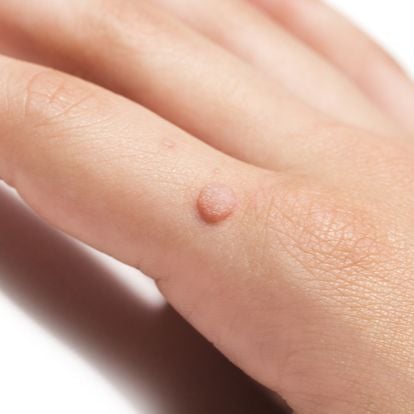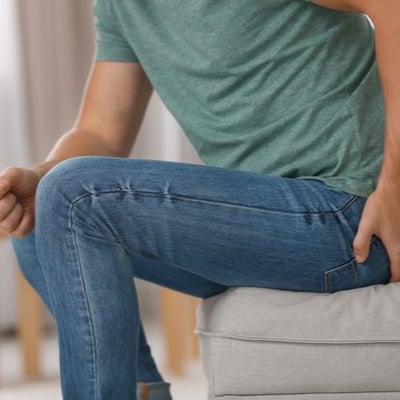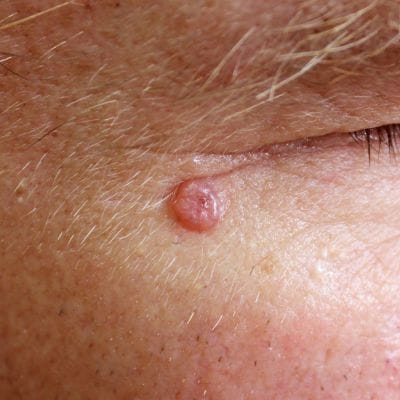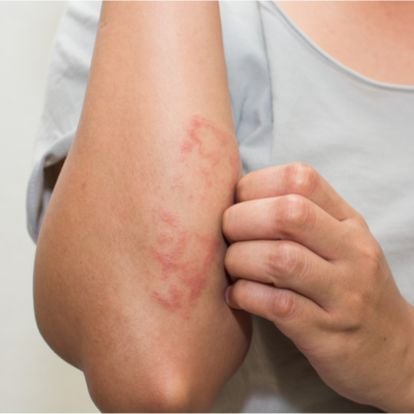Warts
Warts are non-cancerous benign growths on the skin that are caused by infections from viruses known as human papillomavirus (HPV).
While there are several types of warts that you can develop, the most commonly occurring types of warts include:
- Common Warts
This type of wart typically appears on fingers or hands. These warts are commonly rough, hard, bumps that can have tiny black dots on them (tiny blood clots within the wart). They commonly appear on sites of injuries or cuts such as that sustained from biting your nails or picking at hangnails. - Plantar Warts
This type of wart appears on the soles of your feet and can be flat, tough, and thick. These warts tend to grow into your skin causing pain or discomfort with walking or running. It can occur as a solitary lesion or as a group or cluster of lesions. - Flat Warts
Smoother and smaller in size than most other types of warts, flat warts have a tendency to appear in groups or clusters. They are common on the face of children, the beard region of men, and the legs of women. - Genital Warts
Genital warts are a sexually transmitted infection. Appearing on the genitals, anus, and vagina, genital warts can appear as small, flesh colored papules or larger, cauliflower-like growths.
Who Gets Warts?
Warts occur after the skin is infected with one of the many viruses of the human papillomavirus (HPV) family. They are highly contagious and can be easily spread. Warts can be spread by:
- direct skin to skin contact:
- spreading the wart from one area of your body to another
- example: spreading warts from one finger to another finger by picking at hangnails
- spreading the wart from one area of your body to another
- spreading the wart from person to person
- example: mother developing a wart on her finger after touching her child’s wart
- contact with a contaminated object
- example: noticing an increased number of warts on your legs after using a razor that has shaved over a wart
Those most at risk for getting warts include:
- People who have cuts or damaged skin. This can include people with injuries or skin conditions such as eczema that leads to fissures or breaks in their skin. The cut or damaged skin provides easy access for the wart virus to enter the skin and cause infection.
- People who have immature or weakened immune systems. Children have less developed immune systems and therefore are not as effective at fighting off the wart virus. Because of this, children are more susceptible to having warts. Certain conditions (such as HIV) can also affect the ability of our immune systems to fight off infections, leading to an increased risk of developing warts.
To minimize our chances of getting warts or spreading warts, dermatologists recommend:
- Do not pick, scratch, or manipulate warts.
- Do not touch another person’s wart.
- Wear flip-flops at pools, public showers, and public locker rooms.
- If an object such as a razor, pumice stone, emery board has touched a wart, do not use it on any other parts of your body.
How are Warts Diagnosed?
Any new, unusual, changing, or symptomatic growth should prompt a visit to your dermatologist.
At your visit, your dermatologist will evaluate your skin and any lesions or growths of concern. Dermatologists can typically diagnose warts with a skin exam. Occasionally, a skin biopsy (a procedure that removes a small sample of the skin) is done to confirm the diagnosis.
Treatment for Warts:
There are numerous treatment options for warts ranging from at-home remedies to treatments done at a doctor’s visit. Treatments are usually aimed at either destroying the wart and/or harnessing the power of our immune systems. Regardless of the approach taken, it is important to remember that it usually takes multiple treatments done on a consistent basis to achieve the desired results.
Common Wart Treatments Include:
- Cantharidin:
Derived from the blister beetle, a topical called cantharidin can be applied to the surface of the wart. Typically, the topical is left on for a period of time before it is washed off. A blister subsequently develops at the treated site. As the blister resolves, the treated wart can crust over and peel off.
- Cryotherapy:
Liquid nitrogen can be applied to freeze and destroy the wart. As mentioned above, multiple treatments are usually needed before the wart resolves.
- Surgical Procedure: shave removal or excision
Warts can be removed by shaving off the growth and applying heat to the base. Warts can also be removed by cutting out the growth.
- Laser Treatment:
Dermatologists can use lasers to heat up and destroy the wart. As with cryotherapy, multiple treatments may be needed.
- Injections:
Various types of medications can be injected into a wart for treatment. For example, bleomycin (a medication used to treat cancers) can be directly injected into the wart. Other compounds such as candida antigen can be injected into warts to stimulate an immune response to fight off warts.
- Topicals Creams:
Numerous topical agents have been used to treat warts, ranging from over the counter products to prescription medications. Examples would include: salicylic acid, imiquimod, 5-fluorouracil, and topical retinoids.








